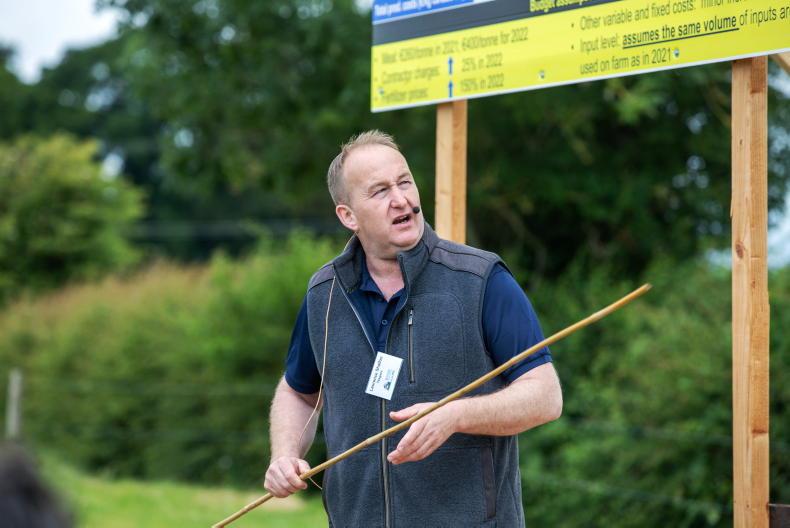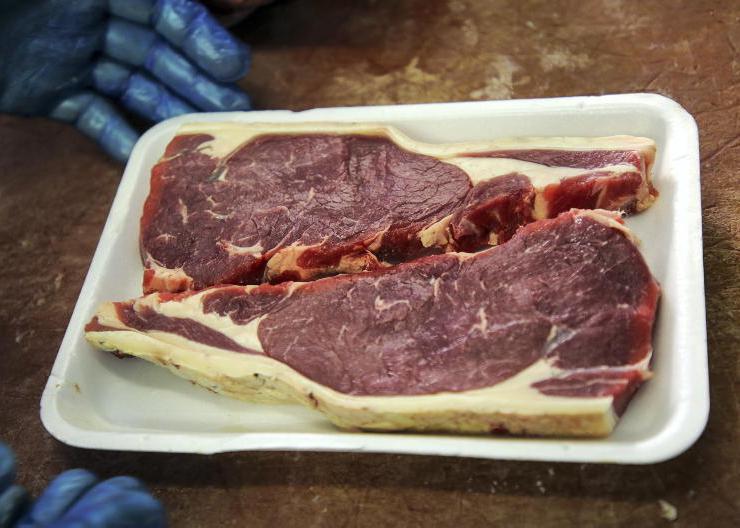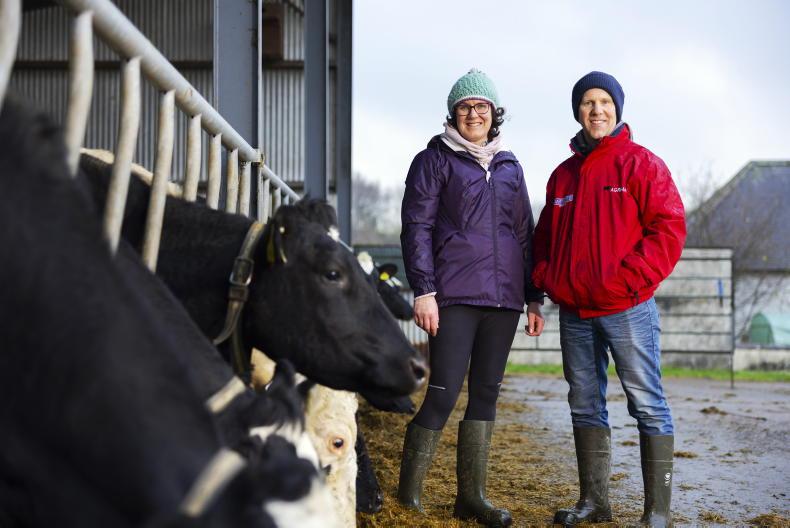The more stringent on-farm regimes which aim to improve water quality will have to be given time to deliver on their objectives, a senior Teagasc official has insisted.
Describing the measures introduced to counter nitrates levels in water bodies as “radical”, Laurence Shalloo expressed confidence that the tighter controls and changed on-farm nutrient management practices will have a positive impact.
He said the increased soiled-water storage that farmers now need, the changes in slurry-spreading and fertiliser-spreading dates, and the banding proposals for dairy herds all have the potential to significantly reduce nutrient losses to water courses.
“These measures are more radical than anything that has been introduced before, but what’s the point of their introduction if they are not going to be given the time to work?” Shalloo maintained.
“All of these actions will have an impact on nutrient losses to water [bodies]. These savings are coming. Will they get us all the way there? We don’t know, but we’d like to see the impact on the trends,” he insisted.
Scientific basis
Shalloo, who is head of Teagasc’s animal and grassland research and innovation programme, defended the scientific basis for banding, arguing that its adoption could help prevent a possible reduction in the maximum organic nitrogen limit from 250kg N/ha to 220kg N/ha.
While he conceded that the introduction of banding will cause “significant disruption” for some dairy farmers, he pointed out that the science which evaluated N outputs for different milk yields was “robust”.
The Teagasc official also defended Ireland’s position on the nitrates derogation.
He pointed out that the derogation allowed farmers “to keep animals on the land”.
The loss of the derogation would “break this link with the land”, Shalloo said.
Timoleague results should
inform water quality debate
Recent positive results from Timoleague in west Cork should inform the national debate on water quality and feed into policy discussions, maintained Teagasc scientist Laurence Shalloo.
A 20% decline in nitrogen (N) concentration levels in rivers in Timoleague was recorded between 2019 and 2022 by Teagasc’s Agricultural Catchment Programme (ACP), despite cow numbers locally increasing in line with national trends over the last decade.
Describing the Timoleague results as “really positive”, Shalloo said the ACP data from west Cork “should definitely feed into the overall discussion” around water quality nationally. The 4.95mg/l recorded in Timoleague last year was the lowest N concentration level logged since the ACP started in 2010. The N concentration level for 2010 was 5.0mg/l.
New measures should be paused
No new water quality-related measures should be introduced until the full impact of the current on-farm actions has been assessed, the IFA and ICMSA have maintained.
IFA policy director Tadhg Buckley claimed that reducing the maximum organic nitrogen limit from 250kg N/ha to 220kg N/ha without allowing sufficient time for the recent measures to fully take effect would be “ill-advised and premature”.
Buckley pointed out that “the nitrate concentration trend has been moving downwards” since 2019.
This view was shared by ICMSA president Pat McCormack.
“Rather than piling on more unproven and contentious regulations, should we not just pause for the time that would allow us to see what’s working and where,” McCormack said.
The more stringent on-farm regimes which aim to improve water quality will have to be given time to deliver on their objectives, a senior Teagasc official has insisted.
Describing the measures introduced to counter nitrates levels in water bodies as “radical”, Laurence Shalloo expressed confidence that the tighter controls and changed on-farm nutrient management practices will have a positive impact.
He said the increased soiled-water storage that farmers now need, the changes in slurry-spreading and fertiliser-spreading dates, and the banding proposals for dairy herds all have the potential to significantly reduce nutrient losses to water courses.
“These measures are more radical than anything that has been introduced before, but what’s the point of their introduction if they are not going to be given the time to work?” Shalloo maintained.
“All of these actions will have an impact on nutrient losses to water [bodies]. These savings are coming. Will they get us all the way there? We don’t know, but we’d like to see the impact on the trends,” he insisted.
Scientific basis
Shalloo, who is head of Teagasc’s animal and grassland research and innovation programme, defended the scientific basis for banding, arguing that its adoption could help prevent a possible reduction in the maximum organic nitrogen limit from 250kg N/ha to 220kg N/ha.
While he conceded that the introduction of banding will cause “significant disruption” for some dairy farmers, he pointed out that the science which evaluated N outputs for different milk yields was “robust”.
The Teagasc official also defended Ireland’s position on the nitrates derogation.
He pointed out that the derogation allowed farmers “to keep animals on the land”.
The loss of the derogation would “break this link with the land”, Shalloo said.
Timoleague results should
inform water quality debate
Recent positive results from Timoleague in west Cork should inform the national debate on water quality and feed into policy discussions, maintained Teagasc scientist Laurence Shalloo.
A 20% decline in nitrogen (N) concentration levels in rivers in Timoleague was recorded between 2019 and 2022 by Teagasc’s Agricultural Catchment Programme (ACP), despite cow numbers locally increasing in line with national trends over the last decade.
Describing the Timoleague results as “really positive”, Shalloo said the ACP data from west Cork “should definitely feed into the overall discussion” around water quality nationally. The 4.95mg/l recorded in Timoleague last year was the lowest N concentration level logged since the ACP started in 2010. The N concentration level for 2010 was 5.0mg/l.
New measures should be paused
No new water quality-related measures should be introduced until the full impact of the current on-farm actions has been assessed, the IFA and ICMSA have maintained.
IFA policy director Tadhg Buckley claimed that reducing the maximum organic nitrogen limit from 250kg N/ha to 220kg N/ha without allowing sufficient time for the recent measures to fully take effect would be “ill-advised and premature”.
Buckley pointed out that “the nitrate concentration trend has been moving downwards” since 2019.
This view was shared by ICMSA president Pat McCormack.
“Rather than piling on more unproven and contentious regulations, should we not just pause for the time that would allow us to see what’s working and where,” McCormack said.










SHARING OPTIONS